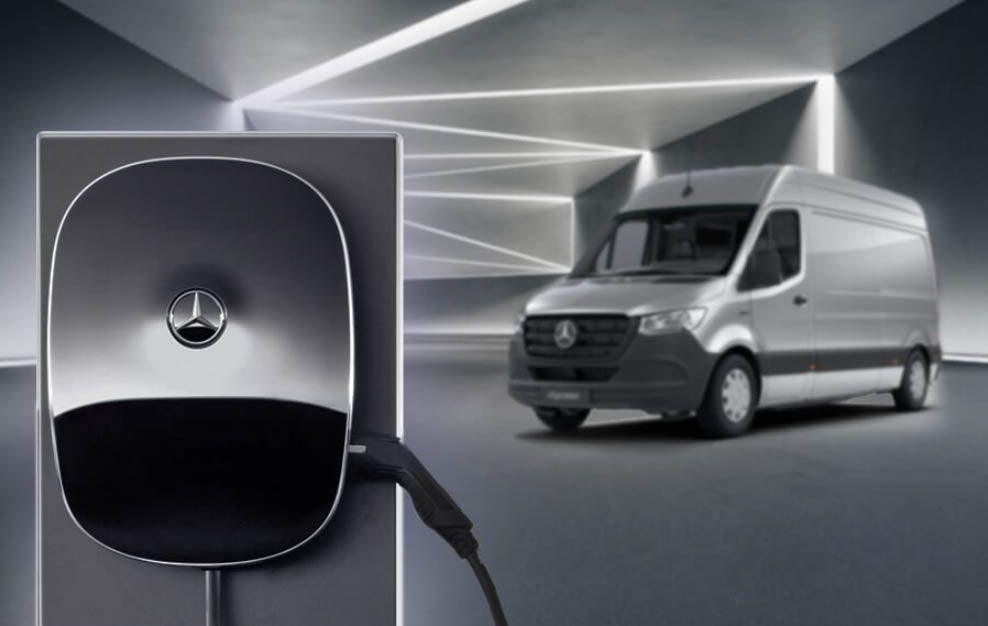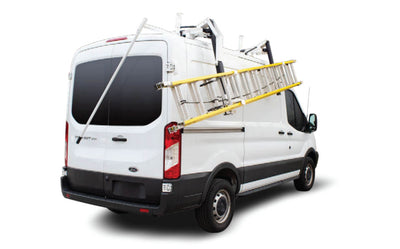
Spotlight EV Fleet: eSprinter Cargo Van
A recent survey conducted by Green Fleet Magazine revealed that 90% of fleet managers believe Electric Vehicles (EVs) are the inevitable future of the commercial fleet business. There is no denying that EVs are rapidly transforming our industry. As the swift adoption of EV fleets continues, fleet managers must learn more about newer EVs in the market to make informed choices and maximize efficiencies across their operations.
The latest EV to hit the market is the eSprinter Cargo van. Earlier this month, Mercedes-Benz announced that it would start producing an electric version of its popular Sprinter cargo van in North America in the second half of 2023. Production is set to begin later this year at the Mercedes-Benz factory in Charleston, South Carolina. Like the Ford E-Transit and BrightDrop Zevo, the Mercedes eSprinter Cargo van appears tailor made for delivery options, and much like the Canoo Lifestyle Delivery Vehicle, it can be repurposed easily.
Features of the Mercedes-Benz eSprinter Cargo Van:
- Battery: The eSprinter Cargo includes all the celebrated features of the classic Sprinter along with a state-of-the-art battery-electric drive system from Mercedes-Benz. The EV cargo van will have a high roof, a 170 inch-long wheelbase and a large 113kWh battery.
- Performance Specifications: The maximum range (WLTP) is up to 400km/ 248.5 miles. eSprinter customers will have the choice of two motor options: A 100kW motor as a base spec and a 150kW motor as an upgrade. Both offer 295lb-ft/ 400Nm of torque, a max cargo volume of 488 cubic feet/13.8 cubic meters and max gross vehicle weight of 9370lbs/ 4250kg. The rear-wheel drive van is powered by a single electric motor with 134 horsepower or 201 hp output.
- Charging Power/Time: The new eSprinter Cargo van can be charged with up to 115kW at fast charging stations, allowing the battery to charge from 10% to 80% in about 42 minutes. The AC charging power/time is 9.6kW, which charges the battery from 0% to 100% in about 12 hours.
- Interiors and Technology: Like the classic Sprinter, the eSprinter Cargo will have Mercedes’ voice-activated MBUX infotainment system and the van’s software will connect to a cloud-based digital ecosystem, making it eligible for over-the-air updates. The latest version of this software includes dynamic route planning that will take into account charging stops, traffic, and topography when planning navigation. It also comes with a body builder connector, electrically adjustable seats (including memory function), and 270 degree rear doors with 90 degree stop. Assistance systems like a digital rear-view mirror, blind spot assist and active break assist, a 10.25 inch touchscreen, top-notch switch gear, a superior steering wheel and spacious, customizable interiors complete the offering.
- Configurations: Mercedes will offer multiple configurations of body style and pack size in other markets, but for now, the North American eSprinter will be offered exclusively as a high-roof, long-wheelbase cargo van.
- Price and Delivery: The price of the eSprinter Cargo has not been disclosed yet. Given that production in North America will begin in the second half of 2023, the summer delivery target will likely make this van a 2024 model.
Conclusion
Transitioning from a conventional fuel-based fleet to a more energy-efficient version is a decision that requires a careful analysis. As a fleet manager, understanding the costs and benefits of EVs like the eSprinter Cargo will help you make an informed decision. The possibility of a lucrative commercial tax rebate, solid urban range and specs and great interiors add up to make the Mercedes-Benz eSprinter a very advantageous proposition.


